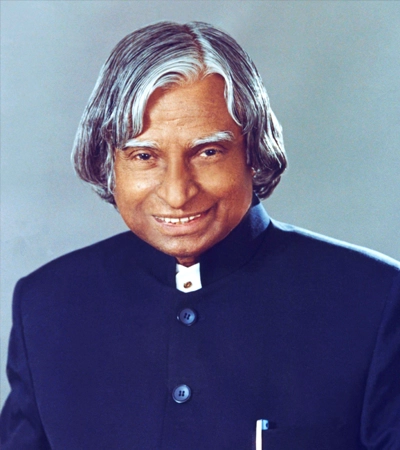
Glued IOL
- Home
- Treatments
- Glued IOL
Schedule
Your Appointment
What is Glued intraocular lens?
Understanding About
The glued intraocular lens (IOL) technique is a surgical method used in ophthalmology for implanting a posterior chamber IOL in eyes where the posterior capsule is deficient or absent.
This technique involves the use of biological glue, derived from human blood plasma, to secure the IOL in place. It was first described by Maggi and Maggi in 1997 and further developed by Gabor Scharioth, involving the creation of scleral flaps and pockets to tuck the IOL haptics. Dr. Amar Agarwal pioneered the modern implementation of this technique and performed the first glued IOL surgery in 2007.
The procedure is particularly beneficial in cases where traditional methods, such as sutures, may not be feasible or effective, such as in patients with compromised posterior capsules. By using a quick-acting surgical fibrin sealant, the IOL can be securely attached to the sclera without the need for sutures, providing stability and improving visual outcomes.
Symptoms
Treatments
Precautions
Symptoms
Treatments

- Glued IOL Surgery: Involves implanting a posterior chamber IOL with biological glue in eyes lacking posterior capsules. It includes creating scleral flaps, making pockets for tucking IOL haptics, and reattaching flaps with glue.
- Multifocal Glued IOL Procedures: Implant multifocal IOLs like ReZoom or Tecnis using the glued technique, offering vision at different distances.
- Glued IOL Scaffold: Combines glued IOL with scaffold procedure, useful for deficient posterior capsule support, traumatic subluxated lenses, and Soemmering rings.
- PDEK with Glued IOL: Combines PDEK and glued IOL for corneal transplantation and IOL implantation, reducing hospital visits.
Precautions

- Careful Case Selection: Surgeons must assess patient suitability based on eye condition and pathologies to determine procedure feasibility and risks.
- Surgical Expertise: Skilled surgeons are essential for handling delicate tissues and precise maneuvers, minimizing complications.
- Aseptic Technique: Strict adherence to sterile protocols during surgery is vital to prevent infections and complications.
- Attention to Detail: Meticulous attention to detail in each step, from creating flaps to positioning IOL haptics, ensures stable fixation and reduces complications.
- Postoperative Monitoring: Close monitoring post-surgery detects complications early for timely management, including assessing visual acuity and IOL stability.
- Patient Education: Patients should be well-informed about the procedure, risks, and postoperative care, and encouraged to report any concerns promptly.
Types of Glued intraocular lens
Different Types of
Before Surgery
During the Surgery
After the Surgery
Before Surgery
- Understand the procedure, risks, and benefits by discussing with the ophthalmologist.
- Undergo a medical evaluation to assess suitability for surgery.
- Discuss IOL options with the surgeon.
- Provide informed consent acknowledging understanding of the procedure and risks.
- Follow preoperative instructions such as fasting and medication adjustments.
- Arrange transportation and assistance for post-surgery.
- Prepare the surgical site.
- Discuss anesthesia options.
- Receive postoperative care instructions and schedule follow-up appointments.

During the Surgery
- Preparation of Glue: Human fibrin sealant is prepared from fibrinogen, thrombin, and aprotinin solution mixed with distilled water and loaded into syringes.
- Surgical Technique: Two scleral flaps are made, a sclerotomy performed, and vitrectomy done. The IOL is placed using a special forceps, and scleral flaps are glued back.
- Choice of IOL: Three-piece foldable IOLs or non-foldable IOLs are used.
- Additional Techniques: Depending on the case, techniques like the No-Assistant technique or others may be used.
- Multifocal Glued IOL: Modified haptics are used for multifocal IOLs like ReZoom or Tecnis for better stability.

After the Surgery
- Follow the post-operative care instructions provided by the surgeon, which may include the use of eye drops, antibiotics, and anti-inflammatory medications.
- Attend follow-up appointments as scheduled to monitor the healing process and ensure proper recovery.
- Avoid activities that may strain or injure the eyes during the initial recovery period.
- Report any unusual symptoms or complications to the surgeon promptly.

Our Doctors

Dr. Kasu Prasad Reddy
M.B, D.O, MRCOphthCheif Cataract & Refractive Surgeon
Somajiguda
,
Telangana

Dr. P. Muralidhar Rao
MBBS, M.S, FIVRSr. Vitreo Retinal Surgeon
Somajiguda
,
Telangana


Dr. Anitha C Kamarthy
MBBS, M.SSr. Cataract & Glaucoma Surgeon
Somajiguda
,
Telangana

Dr. B M Anil Kumar
MBBS, D.O, FLVPEI, MBASr. Glaucoma Consultant
Somajiguda
,
Telangana

Dr. Vamshidhar
MBBS, DNB, FICO ( UK)Sr. Cataract & Refractive Surgeon
Somajiguda
,
Telangana
Glued intraocular lens FAQS
What will happen if I don't place a lens in my eye?
The quality of vision is not good with thick corrective glasses. You will have to wear a + 10 D glass which creates a lot of distortions. It reduces the field of vision, you will struggle with depth perception even after correction with lenses.
How long will it take to do my procedure?
It will take about 20 minutes to 1 hour.
What is the time duration to get back my normal vision?
The vision improves the next day and by a week’s time it would return to normal.
Can I lead a normal life post Glued IOL?
Yes. You can lead a normal quality of life.
Is IOL surgery safe?
While any operation carries the possibility of complications, difficulties following an intraocular lens implant or an IOL surgery are usually uncommon. Your ophthalmologist will carefully examine your eyes and review your medical history before carrying out any surgery to see whether you are fit for an IOL surgery. This can also help you figure out whether there are any factors that could make you more vulnerable to IOL hazards.
Redness, bleeding, and inflammation are some of the many possible side effects of IOL surgery, although they should go away in their natural course of time. A detached retina, severe inflammation, or infection, all of which might result in visual loss, are more serious side effects of this surgery. However, they are not a common occurrence.
Following your IOL surgery, your doctor may prescribe some medicated drops. To avoid infection or inflammation, make sure you take these drops exactly as directed by the doctor.
Our Visitors
Eye-Conic Encounters
at Our Hospital


















